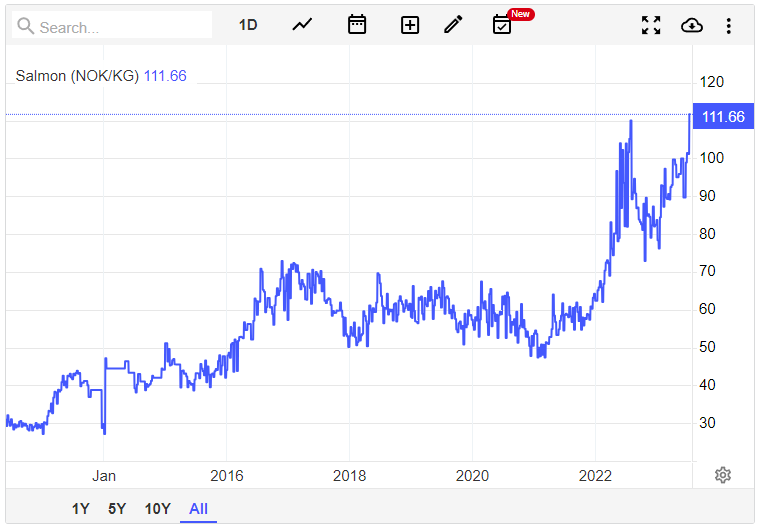
Salmon Prices Soar Due to Climate Change, Costs, and Demand - Will They Stay High??
Salmon prices have been on an upward trajectory since 2022, reaching some of the highest levels in recent years. Several factors have converged to drive up the costs for wild-caught and farmed salmon.
On the supply side, climate change and warming oceans have been linked to declining stocks and reduced catches of wild salmon. Meanwhile, salmon farming has faced its own challenges like disease outbreaks, rising feed costs, and stricter regulations. These factors have constrained supply, leading to the supply-demand mismatch that pushes up salmon prices.
At the same time, demand for salmon has increased globally, driven by rising incomes and greater awareness of the health benefits of salmon, which is high in omega-3 fatty acids. The growing demand against limited supply has further exacerbated the price increases.
Production costs have also gone up, with pricier labor, transportation, and especially feed. As a carnivorous fish that is fed other fish, salmon is heavily dependent on fishmeal and fish oil which are finite resources. The costs get passed through to customers.
Trade policies have also had an impact. Tariffs levied by major salmon importers like China have restricted supply flows from major producers like Norway into key markets. This has disrupted supply chains and availability, again lifting prices.
Finally, a weaker U.S. dollar versus other currencies like the Euro has made imported salmon more expensive in America. Speculation in salmon futures and derivatives may also overstate price changes.
Looking ahead, salmon prices are expected to remain elevated compared to historical levels, as the demand and supply issues persist. Climate challenges will continue to impact both wild catch and farmed salmon. Feed, labor and other input costs are also expected to stay high.
However, the rate of price inflation may moderate if supply constraints ease through more productive and sustainable aquaculture practices. Prices could also get some relief from a strong U.S. dollar, weaker demand, or fewer trade barriers. But overall, salmon prices are likely to stay at historically high levels compared to 5-10 years ago.